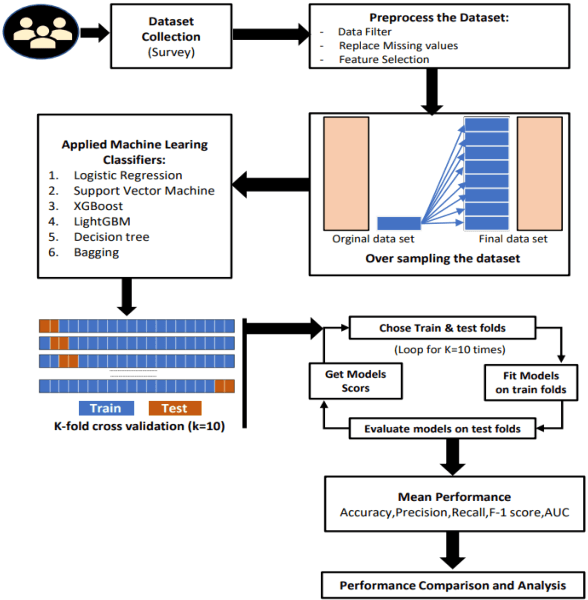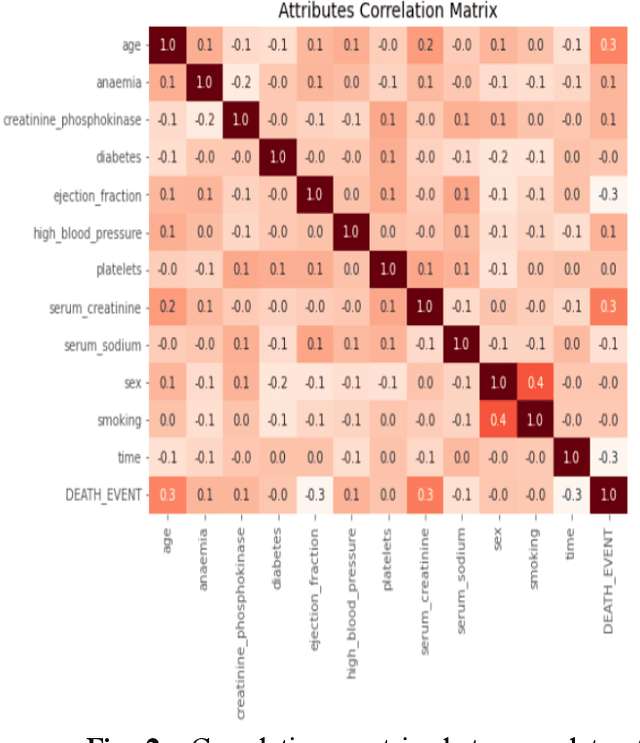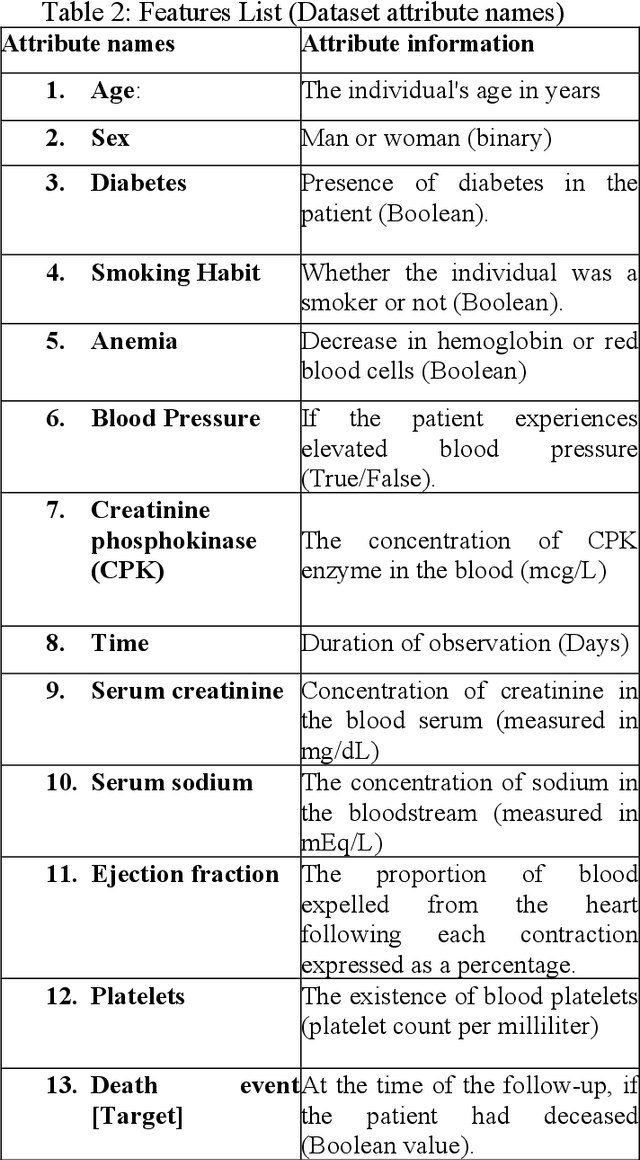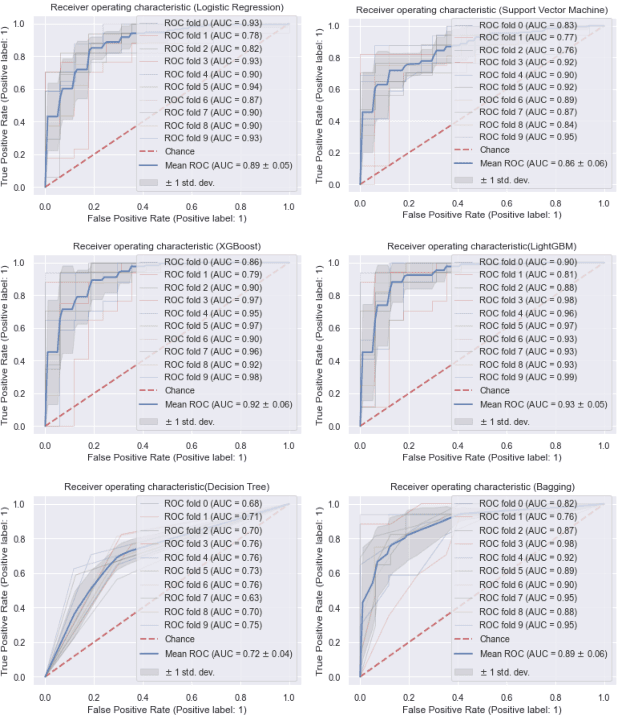Md Abu Sayed
Parkinson's Disease Detection through Vocal Biomarkers and Advanced Machine Learning Algorithms: A Comprehensive Study
Nov 09, 2023Abstract:Parkinson's disease (PD) is a prevalent neurodegenerative disorder known for its impact on motor neurons, causing symptoms like tremors, stiffness, and gait difficulties. This study explores the potential of vocal feature alterations in PD patients as a means of early disease prediction. This research aims to predict the onset of Parkinson's disease. Utilizing a variety of advanced machine-learning algorithms, including XGBoost, LightGBM, Bagging, AdaBoost, and Support Vector Machine, among others, the study evaluates the predictive performance of these models using metrics such as accuracy, area under the curve (AUC), sensitivity, and specificity. The findings of this comprehensive analysis highlight LightGBM as the most effective model, achieving an impressive accuracy rate of 96%, alongside a matching AUC of 96%. LightGBM exhibited a remarkable sensitivity of 100% and specificity of 94.43%, surpassing other machine learning algorithms in accuracy and AUC scores. Given the complexities of Parkinson's disease and its challenges in early diagnosis, this study underscores the significance of leveraging vocal biomarkers coupled with advanced machine-learning techniques for precise and timely PD detection.
Improving Cardiovascular Disease Prediction Through Comparative Analysis of Machine Learning Models: A Case Study on Myocardial Infarction
Nov 01, 2023



Abstract:Cardiovascular disease remains a leading cause of mortality in the contemporary world. Its association with smoking, elevated blood pressure, and cholesterol levels underscores the significance of these risk factors. This study addresses the challenge of predicting myocardial illness, a formidable task in medical research. Accurate predictions are pivotal for refining healthcare strategies. This investigation conducts a comparative analysis of six distinct machine learning models: Logistic Regression, Support Vector Machine, Decision Tree, Bagging, XGBoost, and LightGBM. The attained outcomes exhibit promise, with accuracy rates as follows: Logistic Regression (81.00%), Support Vector Machine (75.01%), XGBoost (92.72%), LightGBM (90.60%), Decision Tree (82.30%), and Bagging (83.01%). Notably, XGBoost emerges as the top-performing model. These findings underscore its potential to enhance predictive precision for coronary infarction. As the prevalence of cardiovascular risk factors persists, incorporating advanced machine learning techniques holds the potential to refine proactive medical interventions.
Generative AI Model for Artistic Style Transfer Using Convolutional Neural Networks
Oct 30, 2023Abstract:Artistic style transfer, a captivating application of generative artificial intelligence, involves fusing the content of one image with the artistic style of another to create unique visual compositions. This paper presents a comprehensive overview of a novel technique for style transfer using Convolutional Neural Networks (CNNs). By leveraging deep image representations learned by CNNs, we demonstrate how to separate and manipulate image content and style, enabling the synthesis of high-quality images that combine content and style in a harmonious manner. We describe the methodology, including content and style representations, loss computation, and optimization, and showcase experimental results highlighting the effectiveness and versatility of the approach across different styles and content
 Add to Chrome
Add to Chrome Add to Firefox
Add to Firefox Add to Edge
Add to Edge